“I feel very strongly that the curtains, bed hangings, etc. will make all the difference in the house. If you knew the many hours I spent trying to get just the right folds etc. in the different curtains in my house, I think you would appreciate that they can only be made by the best upholsterer and even then need supervision in their making.”
– Henry Francis du Pont, January 1940
The du Ponts in America
The du Pont family arrived in America from France in 1800 and in 1802 established a mill to make black powder on the Brandywine Creek near Wilmington, Delaware. The estate they created is called Eleutherian Mills, and the four tracts of land they purchased nearby form the nucleus of what we know today as Winterthur. The first house on the Winterthur estate was built in 1839 by Antoine and Evelina du Pont Bidermann, who named the property after Bidermann’s ancestral home in Switzerland. When Antoine and Evelina died, in the mid-1860s, their son sold the property to Henry du Pont, Evelina’s brother, who passed it on to his son Henry Algernon.
Henry Algernon’s son, Henry Francis (1880?1969), was born at Winterthur. He took over management of the large household after the death of his mother, Pauline Foster du Pont, in 1902. When he inherited the estate after the death of his father in 1926, he began formulating plans to expand in a grand manner. Working with architect Albert Ely Ives, between 1929 and 1931 du Pont not only remodeled the existing house but built a massive extension. In addition to two floors of bedrooms, the house also contained numerous spaces for dining and entertaining in which du Pont created what were considered by many to be the most beautiful rooms in America.

Decorating with Antiques
With the framework provided by architectural elements salvaged from historic buildings in twelve of the thirteen original colonies, du Pont furnished his rooms with antiques, primarily American. These he purchased in quantity through auctions and dealers. Like many other collectors in the early twentieth century, he was strongly influenced by the period rooms in the Metropolitan Museum of Art’s American Wing, which opened in 1924. Furniture and other decorative arts were displayed there in room settings according to a chronology of styles from the seventeenth to the early nineteenth centuries. Efforts were made to create rooms that were “of the period.”
Writing to interior designer Henry Davis Sleeper in 1930, du Pont stressed that at Winterthur he was “doing the house archaeologically and correctly, and am paying the greatest attention even to the epoch of fringes.” When creating window treatments, du Pont did indeed refer to design books of the appropriate period as well as surviving examples of historic valances. These, however, he would adapt to suit the project at hand. At the end of the day, for du Pont, aesthetics always trumped historic accuracy. In his own office, for example, he preferred an 1830s chintz for curtains although the room was created with architectural paneling from a 1790 addition to a house built in 1760. The dates didn’t fit, but the mix looked “right.” In effect, du Pont was creating beautiful installations that featured his extraordinary collection.
Du Pont took great care with the placement of furniture and objects in his rooms, striving for symmetry and balance and introducing color and pattern through the choice of textiles. He loved the color palettes of mid-nineteenth-century printed cotton chintz, which was made highly fashionable in the early twentieth century through the work of designers Elsie de Wolfe and Dorothy Draper. The patterns of antique paste prints-blue and white cottons printed in indigo resist-he found intriguing. As du Pont often noted, “Color is the thing that really counts more than any other.” He fussed over subtle shades, often keeping expensive historic fabrics on approval for months to see how they looked in a room not only at various times of the day but during different seasons of the year. He wanted to be sure that the color was just right.
Access to Materials: Dealers
Although du Pont’s window treatments evoked the period of the architectural elements in a particular room, the fabrics themselves bore little relation to what was actually in use in America from the 1700s to the early 1900s. The specialist dealers du Pont patronized obtained the majority of their stock in Europe, where vast quantities of antique fabrics were readily available from the late nineteenth century onward. Du Pont purchased both dress and furnishing fabrics and routinely disassembled pieces for reuse as curtains or upholstery. In fact, many, if not most, of the textiles used to furnish Winterthur never saw the light of day on this side of the Atlantic until the early twentieth century.
Herman A. Elsberg, a textile designer, collector, and dealer, sold antique silks as well as printed cottons and linens to du Pont. Amy Pleadwell, from Boston, was an artist and teacher who went into the antiques business. She traveled to France at least once a year and sent quantities of fabrics to Winterthur on approval in the 1940s and 1950s, along with postcards and letters. Bertha King Benkard (Mrs. Harry Horton Benkard), a talented family friend, was consulted about furniture placement, paint colors, rugs, objects, textiles and curtains, and even represented du Pont when he was out of town.
Ernest LoNano Interiors
The artisans who were most closely involved with actually fabricating the curtains at Winterthur were employed by the firm of Ernest LoNano. The company was headed by three members of the family with the same name. Du Pont initially contracted with the first Ernest LoNano (ca. 1878?1934), but it was the second Ernest (1901?1958) who worked on the Winterthur expansion and built the company into one of the most influential interior design firms in America. The third LoNano (1931?2013) continued to successfully operate the business into the late twentieth century.
Like the textile dealers mentioned above, the LoNano firm stocked large quantities of antique fabrics to sell to clients. Based in New York City, the firm first became known through its association with the Metropolitan Museum of Art in the early 1910s. The firm’s involvement making curtains, bedhangings, and upholstery covers for the enormous Winterthur house was their largest commission to date. Between 1936 and 1950, du Pont’s daybooks record purchases from the business totaling $54,182.11. These range from what was claimed to be sixteenth-century green velvet to cover an easy chair in du Pont’s bedroom (at a cost of $525) to 70 yards of antique brocatelle for the dining room (at $32 per yard) and often included old linen sheets, which were specially dyed for curtain linings. LoNano also took delivery of fabrics purchased by du Pont from other dealers and sometimes charged for cleaning, restoration, and repairs. Additional invoices include those for the installation of seasonal changes. In November 1931, the firm charged $2,168 “for setting the Winterthur Home for Fall.”
It was customary household practice in H. F. du Pont’s day to change the look of a room with seasonal curtains and slipcovers. Room changes and reinstallations over the years were also dictated by du Pont’s prolific acquisition of new furniture and fabrics-which, of course, he wanted to highlight. The importance of color and its use in the Winterthur garden played an essential part in the choice of the seasonal interior color schemes. The inside/outside connection was an important one for du Pont, and textiles brought nature’s colors indoors.
Du Pont was a prodigious record-keeper. His detailed room inventories indicate the specific textiles, rugs, and furniture to be used for each season. Most textiles were marked with sewn-on labels that identified the months the items were to be hung, and many also carried labels indicating the particular season (1 to 4), with Season 1 being the months of January to March. Of course, with adjustments in installations over the years-with old textiles being taken apart and reused-and with new labels being added to indicate the new arrangements in a room, deciphering which labels belonged to which time period can be a bit of a puzzle. In addition to written room inventories, during the 1940s du Pont instructed Leslie P. Potts, assistant to the superintendent of Winterthur Farms, to produce a series of watercolor room plans detailing the placement of all furniture as well as decorative elements such as rugs and lamps.
Although labor intensive and time consuming, the practice of seasonal changes was important enough to du Pont that he noted his wish for it to continue after his death, spelled out with instructions to his executors.
The Winterthur Rooms Today
By the 1960s it was clear to H. F. du Pont that large quantities of antique fabrics were no longer available and that many of his own beloved textile furnishings had become faded, discolored, and damaged. The solution, of course, was to replace them with eproductions. Although du Pont knew such a change was inevitable, he much preferred the muted shades of the antique and, when possible, would add an older fringe, tassel, or other decorative element to the newer acquisitions to soften the appearance. As always, color was of paramount importance.
After du Pont’s death, the curatorial staff at Winterthur continued to make adjustments in the museum rooms. Some Board of Trustees members were concerned, however, that du Pont’s aesthetic would be lost. Their solution was to identify the most important rooms in the house and designate them “frozen,” with any subsequent changes to require Board approval. And so they remain today. Many of those rooms are featured in the recently published book, The Well-Dressed Window: Curtains at Winterthur by Sandy Brown. This article is based on the Introduction by Linda Eaton.
More than 60 years ago, collector and horticulturist Henry Francis du Pont (1880-1969) opened his childhood home, Winterthur, to the public. Today, Winterthur (pronounced “winter-tour”) is the premier museum of American decorative arts, with an unparalleled collection of nearly 90,000 objects made or used in America between about 1640 and 1860. The collection is displayed in the magnificent 175-room house, much as it was when the du Pont family lived there, as well as in permanent and changing exhibition galleries. For more information visit winterthur.org.


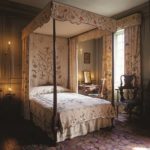
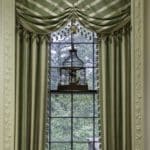
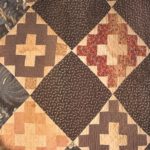
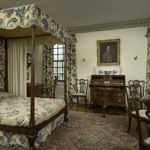
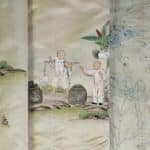
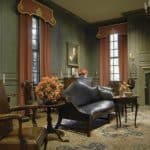
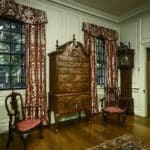




Related posts: